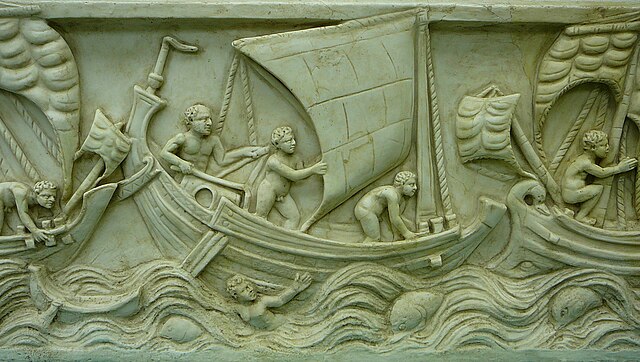Mountbatten pink, also called Plymouth Pink, is a naval camouflage colour resembling greyish mauve. It was first used by Lord Mountbatten of the British Royal Navy during World War II. After noticing a Union-Castle Line ship with a similar camouflage colour disappearing from sight, he applied the colour to his own ships, believing the colour would render his ships difficult to see during dawn and dusk. While the colour was met with anecdotal success, it was judged by experts to be equivalent to neutral greys at best and would make ships with the colour more obvious at worst.
Spitfire with mountbatten pink camouflage applied
"Pink Panther", famous SAS vehicle, as was used during Dhofar Rebellion
Ship camouflage is a form of military deception in which a ship is painted in one or more colors in order to obscure or confuse an enemy's visual observation. Several types of marine camouflage have been used or prototyped: blending or crypsis, in which a paint scheme attempts to hide a ship from view; deception, in which a ship is made to look smaller or, as with the Q-ships, to mimic merchantmen; and dazzle, a chaotic paint scheme which tries to confuse any estimate of distance, direction, or heading. Counterillumination, to hide a darkened ship against the slightly brighter night sky, was trialled by the Royal Canadian Navy in diffused lighting camouflage.
USS West Mahomet in First World War dazzle camouflage
Roman ships, depicted on a 3rd Century AD sarcophagus
USS Olympia
USS Shawmut was the former Eastern steamship Massachusetts converted to lay the 1918 North Sea Mine Barrage.






